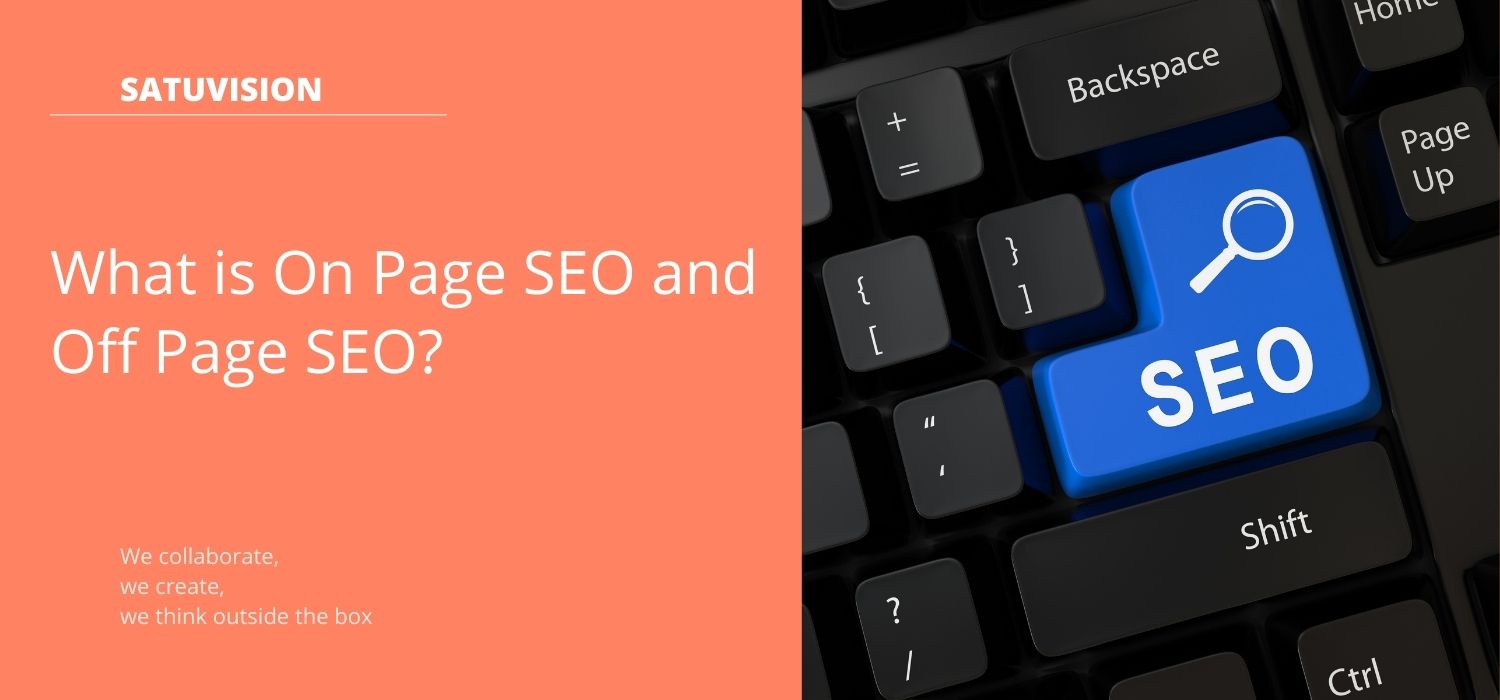What is on page SEO and off page SEO? On page SEO is a website optimization strategy that makes it possible for your website to rank higher in search results. Off-page SEO, on the other hand, involves optimization strategies that are used outside of the website. All website owners aspire to have their website appear at the top of Google search results because doing so will benefit their business by boosting brand recognition, sales, and website traffic. Let’s see an explanation of on page and off page SEO below!
What is On Page SEO?

So, what is on page SEO? On page SEO is a method of improving the content of web pages to rank higher in Google results and facilitate user search. On page SEO primarily focuses on how content appears to search engines. In a different sense, you must first understand on page SEO in order to outperform a competitor’s website.
Also read: 7 Things You Must Do When Doing SEO Audit
What is Off Page SEO?

Off-page SEO is a process used to improve a website externally. Off-page SEO can also be thought of as a way to advertise a website by creating links, getting backlinks, etc.
To help you understand the differences between on page and off page SEO, the following is a view of the information in the form of a table:
| On Page SEO | Off Page SEO |
| Create content for the website that is more Google- and SEO-friendly. | Boost the website’s credibility in Google Pages |
| Analyzing the entire website | Promoting the website |
| Maximize meta description, URL, internal link, image, page speed, SEO title | Maximize backlinks, domain authority, link building, and social media |
| Components: keywords, content, CSS, HTML, URL | Components: domain and page authority, link quality, likes/shares, social media |
Also read: Definition and Benefits of Local SEO and Technical SEO
What are the components of on page SEO?

On page SEO is a technique used on a website that involves optimizing the content of website pages as well as a few technical aspects. Then what is on page SEO component? Here is the explanation:
Heading
Typically, content is divided into Title 1 (H1), Title 2 (H2), Title 3 (H3), and so forth. But keep in mind that there is only one Title 1 for each content (H1). Subtitles, title 2 (H2), title 3 (H3), and other titles can all be set.
Content
The website’s content must be useful to its audience. So when visitors are looking for a relevant topic, your website will rank first. On each content page, try to include 500 words or more. Put natural-sounding keywords in the title, at the start of the paragraph, in the middle, and at the end of the content.
Also read: Want to Do Keyword Research? Let’s Take Advantage of These 8 Free Keyword Research Tools!
URL
Keywords must be used not only in the title but also in the URL. Google’s ability to easily recognize and identify your website depends on the design of its URL structure.
Alt text
The next important step in on page SEO is to include alt text for each image you use in the content. As users look up keywords based on images, this can increase the likelihood that their search results will lead them to your website.
Also read: Tips & Strategy to Increase Your Website SEO Ranking
Mobile-friendly
Google’s top metric right now is mobile page load speed. You can analyze any problems visitors might run into when using a mobile device to access your website with the help of the Mobile-Friendly Site Test.
Page speed
Page speed is the rate at which Google can access and find the page being searched for. The likelihood of a website ranking highly on Google search results increases if the page speed is ideal.
Internal link
Internal links are links that take users from one page of content to another within the same website. This could raise the site’s position on the search results page.
Also read: Why You Should Do SEO Audit?
What are the components of off page SEO?

Off page SEO also has components that help you improve your website promotion strategies, just like on page SEO. What components are there? Check out the details below:
Domain authority
A metric known as “domain authority” was developed by a number of independent parties to assess a website’s credibility based on links from Google. One of the indicators that determine how trustworthy a website is is domain authority.
Also read: The Dangers of Using Black Hat SEO in Your Business
Backlink
A backlink is a term used to name links that lead to a website. You must create engaging and unquestionably high-quality content in addition to backlinks for your website.
Social media promotion
Using the technique of improving social signals, a website can be promoted through social media to get more visitors, rank higher, and gain credibility.
Also read: SEO Definition, Types, Benefits, and How It Works
Which one is more important?

Based on the discussion above about the differences between on page and off page SEO, both are equally important. However, you should first work on your website’s on page SEO before engaging in off page SEO.
Do you have trouble understanding the difference between on page SEO and off page SEO and how to run it? Use the help of SEO services from SATUVISION Digital Agency to implement SEO on your site!
Now you know the explanation of what is on page SEO and off page SEO. You already know that on page SEO, along with off page SEO, is an important optimization technique for enhancing website performance. Visit our website right away to learn everything there is to know about SEO through the SATUVISION blog!





